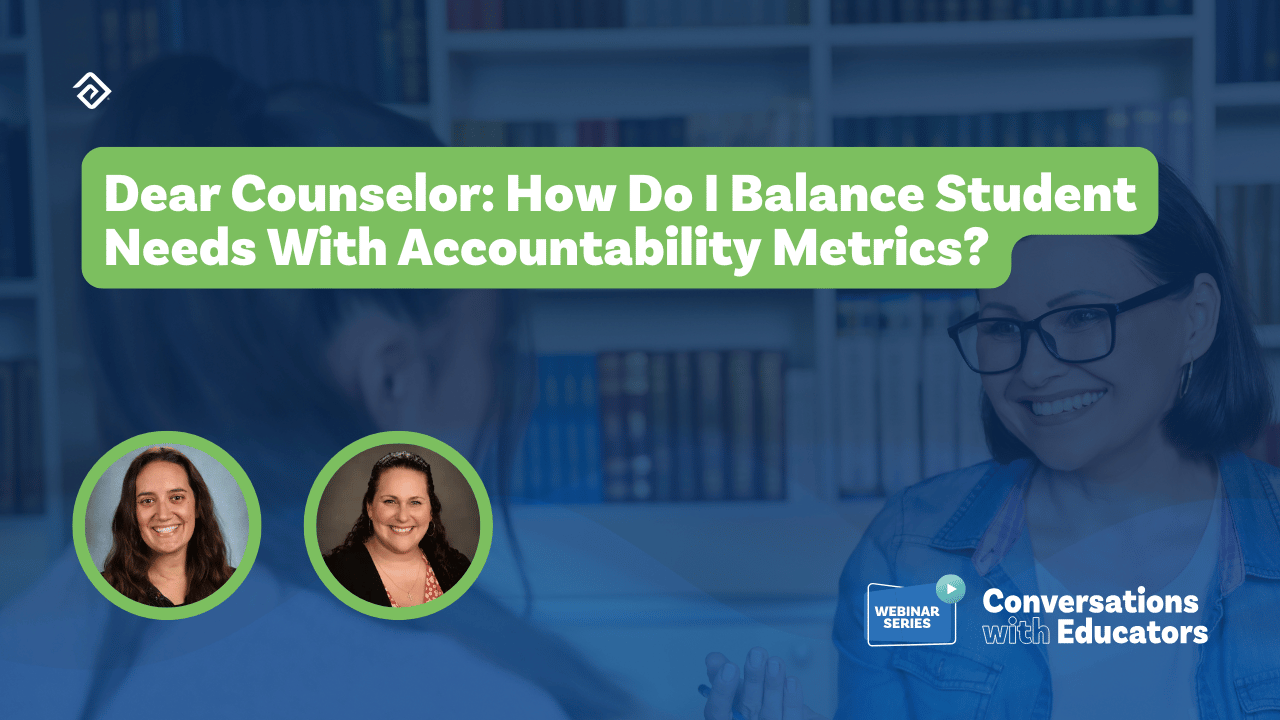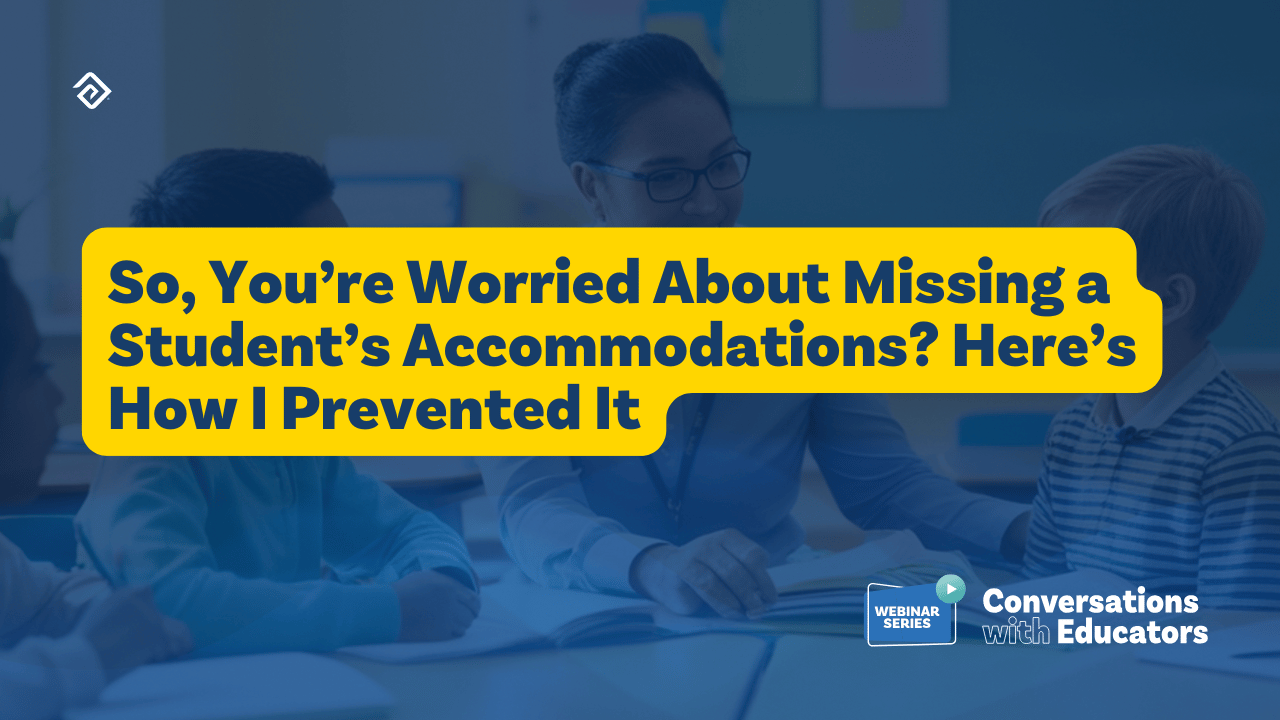Beyond One-Size-Fits-All: Igniting a Passion for Learning in Every Student
It's no secret that the world of education is a vibrant tapestry, woven together by the unique experiences, cultures, and identities of our students. In today's diverse classrooms, educators face the challenge of fostering a love for learning in each unique student. We know that a one-size-fits-all approach simply doesn't cut it anymore.
Our recent 3-part webinar series, in collaboration with our partners at The Danielson Group with their Framework for Teaching, provided invaluable insights into how educators can move beyond a one-size-fits-all approach and create learning environments where every teacher and student thrives. Let's explore these insights and uncover strategies to ignite a passion for learning in every child.

Embracing Diversity: A Call for Culturally Responsive Teaching
We had the pleasure of visiting with Dr. Lee Kappes, CEO of The Danielson Group, and Brian Johnson, The Danielson Group’s Director of Learning Design and Development, who shared some powerful insights into the challenges and opportunities that come with embracing diversity in our schools.
The journey begins with recognizing and celebrating the rich cultures and identities our students bring to the classroom. As Lee aptly stated, "It is hard for me to imagine that we can be successful without valuing the people that we work with day in and day out, and the students that we teach, that we must have an open mind that allows us to...appreciate all of the assets that our students bring to the practice."
One of the biggest hurdles we face is the fear of getting it wrong. As Brian stated, "one of the biggest challenges is about a teacher's or leader's insecurity that they'll do it wrong." It's natural to feel apprehensive when venturing into new territory, but as educators, we're lifelong learners. It's okay to take calculated risks and try new approaches.
So, how do we move past this fear? We start by cultivating a mindset of openness and curiosity. We ask ourselves, "How are our students interpreting the lesson? How do they see themselves within the curriculum?" By fostering an environment where students feel safe to share their perspectives, we can spark meaningful conversations that deepen their understanding, as well as their connection to the material.
Culturally responsive teaching goes beyond just acknowledging differences; it involves weaving students' lived experiences into the fabric of our lessons, creating an environment where they feel seen, heard, and valued.

Building a Culture of Learning: Where Students Thrive
A vibrant learning environment is more than just a well-decorated classroom; it's a dynamic ecosystem where students feel motivated, engaged, and empowered to take ownership of their learning. Brian reminded us that "excellence is a continuous practice," encouraging us to foster a growth mindset and create opportunities for students to actively participate in their education.
Key elements of a thriving classroom culture include:
- Purpose and Motivation: Students need to understand the "why" behind their learning. By making connections to their lives and future goals, we can spark their curiosity and intrinsic motivation.
- Disposition for Learning: Cultivating a positive attitude towards learning involves creating joyful and engaging experiences that encourage students to see themselves as scientists, mathematicians, and lifelong learners.
- Student Agency and Pride in Work: Empowering students to have a voice and choice in their learning fosters a sense of ownership and pride. This can be achieved through collaborative projects, self-reflection, and celebrating their achievements.
- Support and Perseverance: Ensuring all students have access to the resources and support they need is crucial for creating an equitable learning environment where everyone can succeed.
It all boils down to one simple yet powerful phrase: “knowing and valuing our students.” This mindset shift opens a world of possibilities for how we can support and empower our students. It allows us to see them as individuals with unique strengths and challenges, rather than just a collection of test scores and data points.

Unleashing the Power of Collaborative Inquiry
The final webinar in the series shed light on the transformative potential of collaborative inquiry. By identifying problems of practice, investigating solutions, and generating new ideas together, educators can continuously improve their craft and create more impactful learning experiences for their students. In a supportive culture using a structured process, teachers can solve problems and grow collectively in their pursuit of excellence.
Successful collaborative inquiry requires:
- Trust and Empathy: Building strong relationships among educators fosters open communication and a willingness to share both successes and struggles. Mutual respect and trust empower teachers to be vulnerable and lend support in focusing on students' success.
- Dedicated Time: Providing ample time for meaningful conversations and reflection is essential for deep dives into pedagogical practices and curriculum. This can be accomplished during team meetings, study groups, or other structures.
- Intentionality and Leadership: School leaders play a crucial role in modeling collaborative inquiry, setting clear agendas for collaborative inquiry meetings, and creating a culture where teachers feel empowered to engage in this process.
The Path Forward: A Call to Action
As we step into a new school year, let's commit to moving beyond one-size-fits-all learning and create educational experiences that honor the diversity of our students. Let's embrace culturally responsive teaching, foster a culture of learning, and unleash the power of collaborative inquiry.
Remember, every child has the potential to shine, and it’s our charge to help those children to become confident, curious, and capable lifelong learners who are ready to make a positive impact on the world.
More Great Content
We know you'll love





